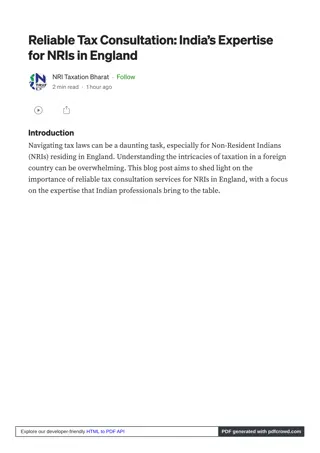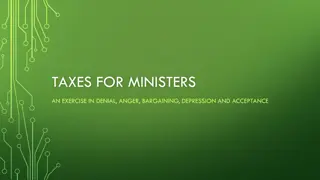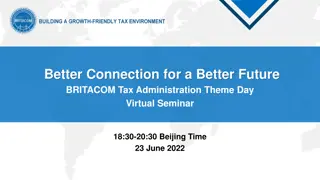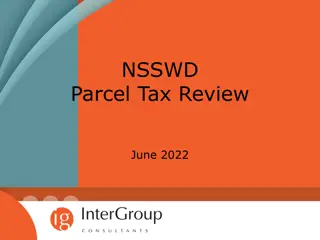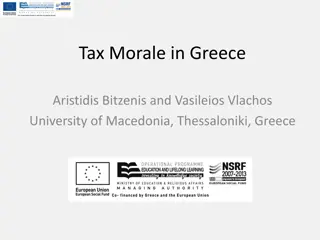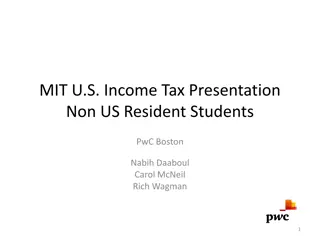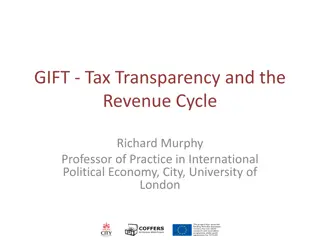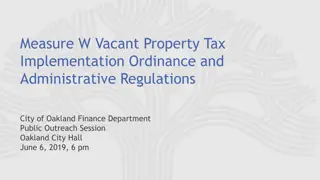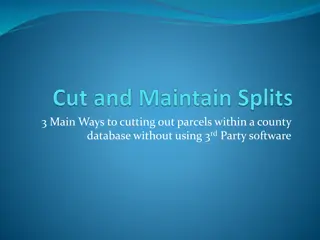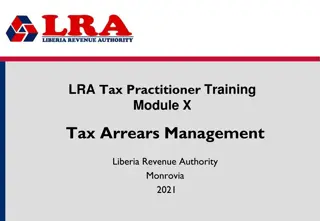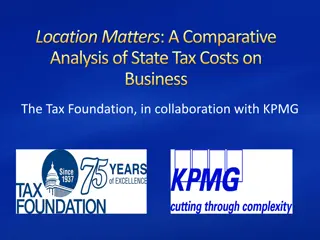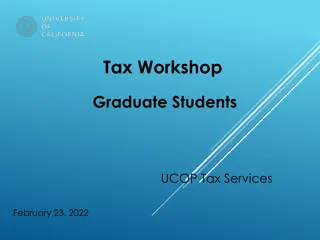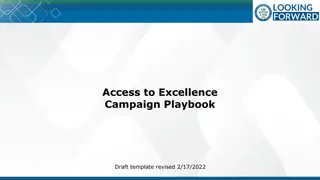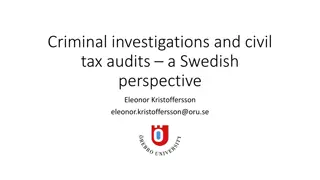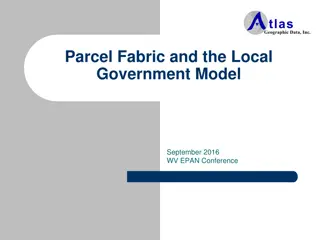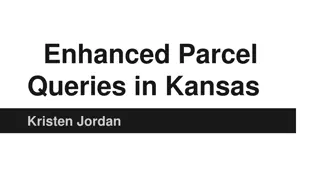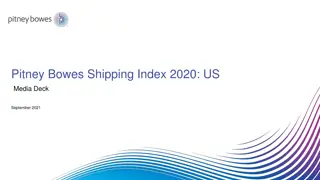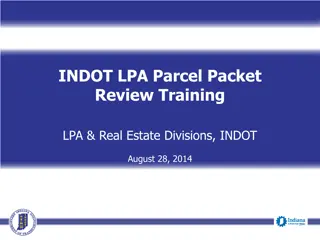Overview of SRVUSD Parcel Tax: Why It Matters and Its Impact
The SRVUSD Parcel Tax plays a crucial role in supporting educational programs amidst fluctuating state revenues. This tax, approved by local communities, helps safeguard core services and enhance educational opportunities within the district. Learn about its history, purpose, and the responsibilities of the Parcel Tax Oversight Committee in ensuring transparent fund utilization. Explore the impact of Measures C and A, the renewal of the tax, and the specific areas where the funds are allocated. Stay informed about the critical role the parcel tax plays in maintaining academic excellence and supporting students in their learning journey.
Download Presentation

Please find below an Image/Link to download the presentation.
The content on the website is provided AS IS for your information and personal use only. It may not be sold, licensed, or shared on other websites without obtaining consent from the author. Download presentation by click this link. If you encounter any issues during the download, it is possible that the publisher has removed the file from their server.
E N D
Presentation Transcript
SRVUSD PARCEL TAX 2020-2021 ANNUAL REPORT Parcel Tax Oversight Committee February 22, 2022
Parcel Tax Oversight Committee Members Nancy Chen Bryan Gesicki Bridgit Pelley Mark Rasiah Valerie Williams David Ash Scott Reider Karen Robman Adrienne Cummings Daniel Hillman SRVUSD Staff Assisting the PTOC Shelley Clark SRVUSD Board Member Liaison
Why Do We Need a Parcel Tax? State revenues for schools, although guaranteed by Proposition 98, are subject to significant fluctuations due to economic conditions. Parcel taxes have been approved across the state to help districts protect core programs and provide additional educational opportunities as approved by the local community.
Background Information About the Parcel Tax From 2008-09 through 2012-13, school district revenues were subject to deficits that grew to over 20%, severely limiting districts ability to continue a broad range of educational opportunities. SRVUSD voters approved Measure C in 2009 to offset some of that loss. Although the recovering economy has restored some of the school district s purchasing power, when the Local Control Funding Formula target is reached, purchasing power will approximately equal 2008-09 levels. At that time, the parcel tax will continue to be an important revenue source to protect core services.
History of SRVUSD Parcel Tax Measure C approved in 2009 for seven years authorized $144 tax per parcel. Measure C expired on June 30, 2016. Measure A was approved by the voters in 2015 to extend the $144 tax per parcel for nine years. The parcel tax generated $6,869,061 for the 2020-2021 fiscal year.
Measure A Ballot language specifies: SRVUSD has been fortunate to receive generous support from the community since 2004. This renewal measure will continue to protect academic excellence in our schools. Parcel Tax Funds Will Authorized to Fund: Core academic programs in reading, writing, math and science; Advanced Placement courses and other programs to prepare all students for success in college and careers; Ongoing teacher training and development to attract and retain teachers; Career and technical training programs. Parcel Tax Funds Will Not: Pay for Administrators salaries
Measure A Specifies a PTOC Parcel Tax Oversight Committee Responsibilities: Provide oversight for the SRVUSD School Board on the expenditures funded by the parcel tax in order to ensure that the funds are spent for the purpose approved by the voters. Monitor the expenditures of the parcel tax by the District and will report on an annual basis to the Board and community on how the parcel tax funds have been spent. Source: SRVUSD Resolution 02/09-10
PTOC Committee Review Process Committee members were presented with 2020-2021 financial records detailing all parcel taxes received and expenditures made in accordance with voter authorization. State accounting procedures provide resource accounting codes (required to be used by all school districts) to track both revenues received and expenditures associated with those revenues. The SRVUSD financial system provides referenced documentation for every deposit and expenditure made throughout the fiscal year.
PTOC Committee Review Process Committee members reviewed the financial reports in detail as well as associated analyses prepared by the business department. In addition, the committee was presented with information from the County Tax Collector/Treasurer on the status of the number of homeowners requesting exemptions, delinquencies, and adjustments, which provided additional assurance that the amount received by the District was in line with the amount budgeted and spent in 2020-2021. Further reconciliation as to the net received by the District was provided by the Office of the Auditor-Controller of Contra Costa. The gross amount received is reduced by the collections fees charged per parcel by the County and any refunds issued. Total deducted for 2020- 2021 was $41,067.
Salaries and Benefits Represent 93.49% of Total Unrestricted Expenditures Total Unrestricted Expenditures = $245,983,146 Services & Expenses 12,801,403 5% Books & Supplies, 3,868,787 1% Capital Outlay & Other Outgo, (665,845) 0% Certicated Salaries, 132,859,089 54% Employees' Benefits $65,668,614 27% Certicated Salaries Classified Salaries Employees' Benefits Books & Supplies Services & Expenses Capital Outlay & Other Outgo Classified Salaries, 31,275,075 13% The Parcel Tax Funded 2.79% of Unrestricted Expenditures
Use of Parcel Tax Funds In 2020-21 SRVUSD received $6,869,061 in parcel tax revenue These revenues funded 59.48 FTE classroom teachers (salaries and benefits) using the following account codes:
Conclusion Based on the PTOC s analysis of the District s audited 2020-21 financials, the PTOC concludes that the parcel tax funds were spent within the purpose of the parcel tax measure for the 2020-21 fiscal year and that no administrative salaries were funded with these revenues.
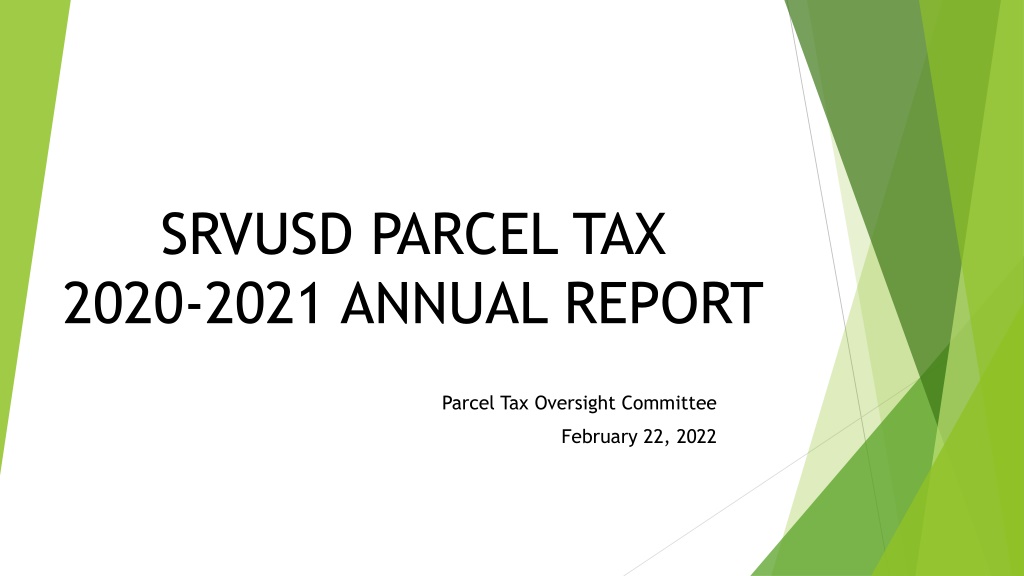


![Town of [Town Name] Real Estate Tax Rates and FY 2024 Budget Summary](/thumb/62211/town-of-town-name-real-estate-tax-rates-and-fy-2024-budget-summary.jpg)
